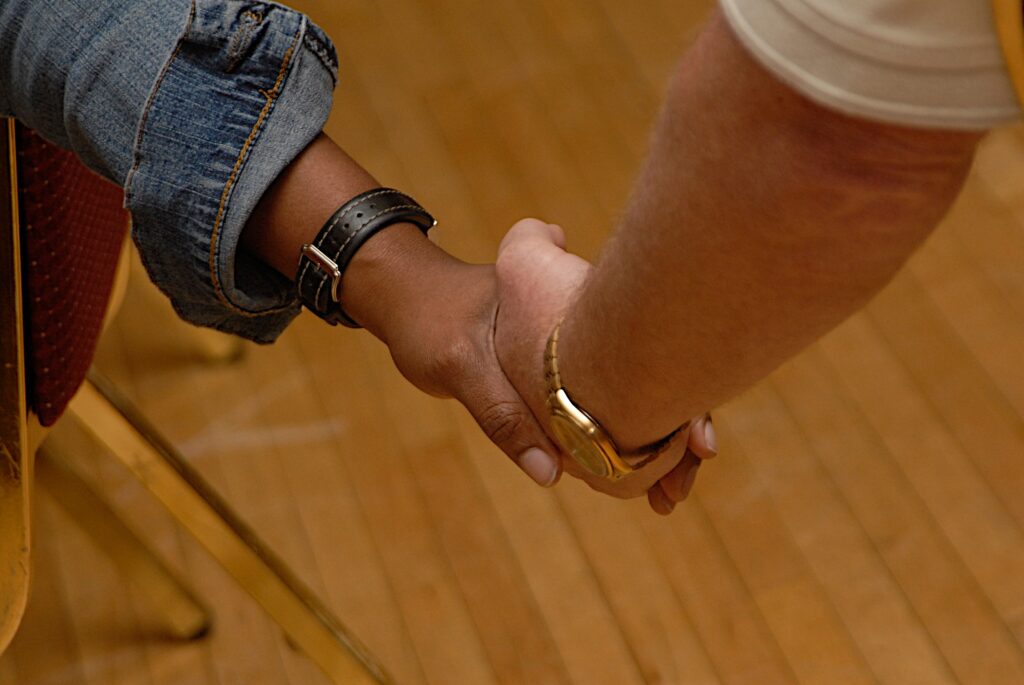It is becoming increasingly evident that trust is an essential moral foundation for the functioning of democracy. The greatest challenges in our communities, our countries and the world today are not intellectual, or technical, or even economic. They are problems of lack of trust.
But what is trust? Most of us have an implicit understanding, but its multidimensional nature makes it hard to describe although we are very aware when it is present and when it is not. Kate Monkhouse, a British trainer and facilitator, likens it to “ligaments in the body, holding things together. When crises occur, it is fit to flex and respond – or snap – if stretched.”
My personal appreciation of this factor first occurred many years ago as a young, impatient activist eager for social change, in Richmond, Virginia. My friend and mentor, a Black lay preacher and community worker by the name of John Coleman, told me, “You need to build a bridge of trust strong enough to bear the weight of the truth you are trying to deliver.” All of us have our own truths we want to deliver and passion for things we want to achieve. But the most-needed reforms in our communities require the kind of trust-based collaboration that can only be achieved by individuals who have the vision, integrity and persistence to draw out the best in others. John never shied away from delivering blunt truths, but he had a gift for building relationships of trust with people of all backgrounds, from bankers to bus drivers. And as a result, people heard his truths and were inspired to action.
In the course of writing a paper on this topic, as training consultant for Initiatives of Change International’s Trustbuilding Program, I consulted several practitioners and scholars, as well as various books and research papers. Here are a few reflections on trust that stand out.
Explore inner change. Patrick McNamara, Director of International Studies at the University of Nebraska at Omaha, highlights the intrapersonal dynamic. He says, “You cannot build trust with others if you do not trust yourself.” Marc Gopin, who directs the Center for World Religions, Diplomacy, & Conflict Resolution at George Mason University, writes in Healing the Heart of Conflict, “What goes on between people cannot be separated from what goes on inside people. Who we are, deep inside, will determine how well we get on with others, and so, if we want to fix our conflicts …we had better get started on ourselves.” Personal practices to nurture our own inner lives are essential for trustbuilders. McNamara says, “If you do not feel your life is aligned with your values and calling, it is very difficult to trust yourself.” He cites his own three-fold practice of “centering prayer, individually and with a group; openness to God’s leading through regular times of quiet; and teamwork with colleagues who know me and who can hold me accountable.”
Demonstrate a trustworthy quality of life. In the UK, Louie Gardiner and her colleagues have identified “Seed Behaviors.” They state that “safeguarding my own trustworthiness calls for proactive commitment to act with integrity and to equip myself to engage compassionately, safely, and boldly in the service of that which calls me to action.” The question to ask is, “What shall I do each day for others to consider me trustworthy enough to stand alongside me?” We must walk the talk and demonstrate authenticity. People pay more attention to what we do than to what we say. Qualities such as honesty, integrity, humility, vulnerability, compassion, empathy and reliability tend to engender trust.
Listen to others and engage all stakeholders in honest conversation. We can learn to honor different stories and experiences, even those difficult to hear. People are more likely to accept challenging data if they feel their stories are being heard. Careful listening and speaking honestly can move us from an exchange of information to an experience of transformation. As I write in my book Trustbuilding: An Honest Conversation on Race, Reconciliation, and Responsibility, “When we experience dialogue at this level, we respond and behave differently. We relate to other people differently and choose different priorities in our lives. Our friendships, our interests and our world view are all deeply affected….Such dialogues create space where people feel able to express their deepest emotions, listen carefully, and find the courage to shine a spotlight on their own responsibility for change instead of accusing others.”

Step beyond our comfort zones. Americans have an increasing tendency to socialize with like-minded people and to live in regions of the country which are conducive to their cultural and political outlook. We’ve grown physically and emotionally distant from one another: our hopes, fears and preoccupations. Ernest lectures do not touch the emotions. We all need to make a conscious effort to put ourselves in environments where we may hear different experiences and different concerns. We may be surprised to find some common ground.
Acknowledge historical harms. Joseph Montville, the architect of Track II diplomacy, writes, “When one or more sides has suffered traumatic historical or current losses whose depth and tragedy have not been acknowledged, or atoned for, wounds do not heal. Time does not heal wounds. Only healing, actively pursued, heals wounds. Consciously or unconsciously, these wounds are part of the historical identity of the losing side, handed down from generation to generation.” What is needed is honest uncovering of the past, and a reframing of the narrative that enables the consciousness of people to be “activated in the most positive sense.”
Recognize the difference between intent and impact. At an individual level, one might say or do something intended to be helpful, but which is heard or experienced by the other party as hurtful. In the public arena, policies may be designed and implemented with the best of intentions, but the impact may have unforeseen negative consequences on a group or community. In both cases the injured party may experience loss of confidence in the trustworthiness of the other party.
Honor everyone’s dignity. Barry Hart, a professor emeritus at the Center for Justice and Peacebuilding at Eastern Mennonite University where he focused on conflict, integrity and conflict studies, writes that in conflict situations, as negotiators recognize their own value and worth, they begin to be open to the possibility of the same in others. “It is this dignity nexus of value and worth within members of the negotiating parties that provides a sense of common humanity and purpose and allows for the possibility of meaningful and workable agreements to emerge. Not that this is an easy process or even possible in all cases, but when a bridge between parties is built on the premise of one’s own and the other’s worthiness and value, there is a greater potential for transformational thinking and acting to take place.”
Build trust within a group as well as between groups. Joshua Ballew, a practitioner, notes that in large-scale conflict or tensions, interventions typically occur among only a portion of each group. As trust is built between individuals of two groups, there is a risk of a reduction in trust between groups. He likens the task to moving stones up a mountain, where the stones correspond to the complexity of the issue. Therefore, we must constantly monitor progress. “Once we identify which stones must be taken up the mountain, and check that both the mountain of the other and one’s own group are being climbed, then those stones that reach the top can be assembled into a bridge of trust between groups.”
Commit to action. Melvin Dowd, a clinical psychologist, educator and biomedical ethicist, writes, “To sustain trust there must be committed action among all parties. We make promises to each other and then hold each other accountable to the promises we made.” It is this step that connects change within and between individuals to the possibility of transformative change in society.
Build a team. Building trust in a community is hard work and people of many social backgrounds with different skills, experiences and perspectives are needed. Bringing such teams and partners together will inevitably produce tensions that must be faced honestly. Teambuilding is often the most neglected aspect of social change efforts. As my colleague Rev. Sylvester Turner reminds us, movements don’t fail from the outside, they fail from the inside. But with persistence and vision, it is possible to create what the educational innovator, activist and reformer John Gardner describes as “networks of responsibility drawn from all segments coming together to create a wholeness that incorporates diversity.”
These insights and many others have informed the development of the Trustbuilding Program. They are key steps in the task of building the trust that is the foundation for just, peaceful and inclusive societies.
Learn about the Trustbuilding Program being implemented by Initiatives of Change International.
